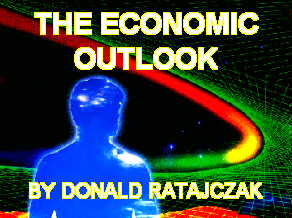|
|
|
May 24, 2001 |
Several decades ago, economist Milton Friedman argued that the lags between monetary policy and economic activity were long and variable. Indeed, he maintained that because of policy uncertainty, the best policy was to maintain monetary growth that was consistent with trend economic growth without inflation.
Most economists shudder to think what would have happened to economic conditions in the U.S. in the past two decades if such a rule had been used for monetary policy. Federal Reserve Chairmen Paul Volcker and Alan Greenspan have been among the most activist users of monetary policy and many believe they have also been among the best.
Nevertheless, the lags between monetary policy and economic activity have been long. As a result, the Federal Reserve needed to end economic stimulus even before that stimulus was seen to have solved the problem. Alternatively, Federal Reserve policy had to be reversed quickly once conditions approached desirable levels for fear that too monetary medicine had been used.
What causes the lags is a combination of institutional resistance to changing liquidity, especially in the banking system, and counter-cyclical money holdings by households. When inflation increases, households do not wish to hold money balances. Therefore, they spend more rapidly, leading to more economic activity that can be supported in any given time period by the amount of money that is available.
Recently, however, households have been reducing balances in their checking accounts. Instead, they have used higher yielding forms of liquidity, such as money market accounts with higher interest yields than the checking account. Indeed, the liquidity available for investments is indistinguishable from the liquidity used for normal spending for many households because their checking accounts are at the brokerage or mutual fund institutions.
Indeed, checkable deposits at large commercial banks have been falling for several years now.
This shift in money holdings may increase the speed by which any change in monetary policy is transmitted to the economy. I believe that the success of monetary policy to ward off the Asian crisis in 1998 was the result of much more rapid response to stimulative monetary policy than would have occurred in Friedman's day.
In recent weeks, several members of the Federal Reserve System, including Chairman Greenspan have hinted that they believe the lags between monetary policy and economic activity have permanently changed to much quicker response.
If this is so, and I believe it is, then more active monetary policy can be pursued without putting too much of an inflationary overdose to any stimulus or too much job loss side effects to any monetary restraint. Certainly, the Federal Reserve is well aware that its restraint of last year led to economic weakness by the Christmas season.
Aside from more shifts in Federal Reserve policy than historically normal, the shorter lags also mean that a policy can be pursued until some success already is developing. In other words, the Federal Reserve can continue to reduce interest rate targets until definite improvement in the economic is observed.
Chairman Greenspan said as much, to the extent that he was understood, in his speech to economists in New York this past week. He believes substantial stimulus will support the economy by the end of this year, but he also is worried that more than acceptable weakness could develop before that strength develops.
My interpretation is that the Chairman still is inclined to lower rates, but he will end that policy when strength begins to surface. At this time, the economic indicators are mixed. Therefore, further interest rate cuts are likely, but not very many more.

